- Home
- Patricia Smiley
The Second Goodbye
The Second Goodbye Read online
Copyright Information
The Second Goodbye: A Pacific Homicide Novel © 2018 by Patricia Smiley.
All rights reserved. No part of this book may be used or reproduced in any matter whatsoever, including Internet usage, without written permission from Midnight Ink, except in the form of brief quotations embodied in critical articles and reviews.
As the purchaser of this ebook, you are granted the non-exclusive, non-transferable right to access and read the text of this ebook on screen. The text may not be otherwise reproduced, transmitted, downloaded, or recorded on any other storage device in any form or by any means.
Any unauthorized usage of the text without express written permission of the publisher is a violation of the author’s copyright and is illegal and punishable by law.
This is a work of fiction. Names, characters, places, and incidents are either the product of the author’s imagination or are used fictitiously, and any resemblance to actual persons living or dead, business establishments, events, or locales is entirely coincidental.
First e-book edition © 208
E-book ISBN: 9780738755960
Book format by Steff Pitzen
Cover design by Kevin Brown
Cover Illustration by Dominick Finelle / The July Group
Editing by Nicole Nugent
Midnight Ink is an imprint of Llewellyn Worldwide Ltd.
Library of Congress Cataloging-in-Publication Data
Names: Smiley, Patricia, author.
Title: The second goodbye : a Pacific homicide novel / Patricia Smiley.
Description: First edition. | Woodbury, Minnesota : Midnight Ink, [2018] |
Series: A Pacific homicide novel ; #3.
Identifiers: LCCN 2018020616 (print) | LCCN 2018022740 (ebook) | ISBN
9780738755960 (ebook) | ISBN 9780738752365 (alk. paper)
Subjects: | GSAFD: Mystery fiction.
Classification: LCC PS3619.M49 (ebook) | LCC PS3619.M49 S43 2018 (print) |
DDC 813/.6—dc23
LC record available at https://lccn.loc.gov/2018020616
Midnight Ink does not participate in, endorse, or have any authority or responsibility concerning private business arrangements between our authors and the public.
Any Internet references contained in this work are current at publication time, but the publisher cannot guarantee that a specific reference will continue or be maintained. Please refer to the publisher’s website for links to current author websites.
Midnight Ink
Llewellyn Worldwide Ltd.
2143 Wooddale Drive
Woodbury, MN 55125
www.midnightinkbooks.com
Manufactured in the United States of America
Dedicated to William Shakespeare,
for his prescient description of Davie Richards:
“And though she be but little, she is fierce.”
—A Midsummer Night’s Dream
Acknowledgments
My deepest gratitude to the people who read pages of this novel and offered advice on how to make them better: Dana Isaacson, William Solberg, my amazing agent Sandy Harding, Harley Jane Kozak, Matt Witten, Bonnie MacBird, Craig Faustus Buck, Jamie Diamond, Jonathan Beggs, Linda Burrows, and Bob Shayne.
A tip of the hat to Nicole Nugent and Terri Bischoff at Midnight Ink for shepherding the book from pages to publication, and to my law enforcement friends who helped me better understand police procedure and takedown strategy, including Michael DePasquale and Thomas Leighton. Fingers crossed they will turn a blind eye when Davie doesn’t always follow their expert advice—it’s fiction after all.
Special kudos to my friends Penny and David Collins for trekking to Franklin Canyon Reservoir to scout out locations for a crucial scene in the novel, and to Hannah Hempstead and Stephen Courtney for schooling me about Florida and naming the Seaglass Cafe.
My gratitude to Jane Newell for granting permission to use her mother’s name as a character in this novel in support of the Anaheim Public Library Foundation. The real Kathleen Newell passed along her love of books and libraries to her daughter, just as my mother did to me. Kathleen Newell shares little in common with the fictional Kathleen except for her Florida roots and her keen sense of style.
Finally, to all the people who have championed my writing over the years. I love you all beyond measure.
1
Knowing she wouldn’t pass a background check, Sara Montaine had never tried to buy a gun, but now she had no option but to risk it. For the past ten days she’d seen strange cars parked on the street in front of her house and experienced hang-up calls at odd hours. A few nights ago she’d gone outside to empty the garbage and was sure she saw a dark figure moving in the shadows. Someone was watching her. She could only conclude that after all this time and all her careful planning, they had found her, they knew where she lived, and she had no doubt they meant to silence her forever.
Two nights ago Sara had researched weapons on the Internet. A person could find anything online these days. Semiautomatic pistols with their magazines and sliding racks seemed too complicated, so she settled on a .38-caliber Smith & Wesson revolver—easy to use and deadly at close range. She watched a video on how to load the bullets—properly called rounds. It seemed easy enough: slip a few into the cylinder and the gun was ready to fire.
Her plan wasn’t foolproof, but she could no longer ignore the threat. Fate had forced her hand. The gunstore was far away from where she lived, located in a strip of squat buildings in a downtrodden section of Venice Boulevard in Los Angeles.
There was a small parking lot in front of Black Jack Guns & Ammo, but Sara decided to leave her Mercedes in a nearby residential area to avoid surveillance cameras, should there be any. No use calling attention to herself. There was a two-hour parking restriction, but she would only need a fraction of that time. She just had to stay focused. No wavering.
Approaching the front door, she noticed an elderly man watering ranunculus in a planter box outside the shop next door. She avoided his gaze and peeked inside the gunstore window. The owner stood behind the counter, watching a poker competition on TV. Her hands trembled. She took a deep breath to shore up her courage as she walked inside, forcing a practiced ingénue smile.
He turned from the TV. “What can I do for you?”
He didn’t appear to recognize her, but she hadn’t expected him to. It had been a long time since they’d seen each other and she’d changed since then. Her hair was darker and she’d lost weight. The cosmetic surgery hadn’t been dramatic, but perhaps it was enough to throw him off. He stared at her a moment and then flashed a wide-eyed look of recognition.
She glanced inside the glass case in front of her and pointed to a Smith & Wesson revolver with a brown wooden handle and a short barrel. A snubnose, she’d learned from the manufacturer’s website. Not her first choice, but it would serve the purpose.
“That’s the gun I want to buy,” Sara said, pointing to the revolver, “but my hands are small. Could I hold it to check the fit?”
He slipped his key into the lock of the glass gun case. Before he could open it, his cell phone rang. Sara hoped the call wouldn’t last long. She was in a hurry to finish the purchase and get back to the safety of her home. The man focused his attention on the caller, speaking in hushed but heated tones as he hurried into the back room. This kink in Sara’s plans left her unsure of her next step—that is, until she noticed the key was still in the lock.
She scanned the area and saw several cameras pointed her way, but there was nothing she could do about that. She’d just have to make the best
of the situation. Her pulse raced as she slipped behind the counter and turned the key. She reached into the case and grasped the handle of the gun.
A perfect fit.
2
It was early May and a wildfire in the foothills north of Santa Paula choked the surrounding air with the acrid odor of charred chaparral. Flames fanned by years of drought and higher-than-usual temperatures had already destroyed multiple buildings and forced hundreds of people from their homes.
LAPD Homicide Detective Davie Richards had lived in Los Angeles her entire life. When she was a kid, the fire season had typically started in September, whipped up by fierce Santa Ana winds, and ended in December when the rains came. But extreme dry conditions caused by climate change had stretched a four-month disaster into a year-round hell. Climate change caused drought. Drought caused fire. Fire sent carbon into the atmosphere, triggering more climate change. Chicken, egg. Cause, effect. Davie wondered if there were parallels between the damage caused by wildfires and the brutality of murder, but maybe she was just overthinking.
There hadn’t been a homicide in LAPD’s Pacific Area for weeks, so for the past several days she’d been sifting through two of the division’s 172 unsolved murders. Her boss Frank Giordano had compiled the list of cases dating back to the 1960s, when Pacific was called Venice Division. Most of the cold case deaths had occurred long before Giordano was in charge of the Homicide table, but it was his personal mission to solve every one of them before retiring. That was unlikely to happen because he’d already started the paperwork to pull the plug on his career.
Giordano had distributed eight open cases with the most potential among his four Homicide detectives. Davie had been poring through the two Murder Books assigned to her, making to-do lists and searching for new leads—a witness to re-interview, forensic evidence that might have been collected but never tested, or some other bit of overlooked minutiae.
The first case was the five-year old strangulation death of a female resident of Mar Vista. After a quick search, Davie not only learned her husband, the only suspect, had recently committed suicide but also that several pieces of crucial evidence were missing from police storage. Not much to go on there.
The other case was the brutal two-year-old murder of gangbanger Javier AKA Javi Hernandez. The crime scene photos revealed an overweight young man covered in tattoos and blood, curled into a fetal position on a mattress in the carport of his Palms apartment building with fifteen stab wounds on his neck and torso.
Witnesses—at least the ones who were willing to talk to the police—claimed Hernandez was a drug dealer for C-Street, a Westside gang. The Investigative Officer assigned to the case believed a fellow gang member had killed Hernandez in a beef over drug sales because the day after the murder, the victim’s car was found at the other man’s home. He’d been interviewed but claimed he borrowed Hernandez’s car with the victim’s permission. Several people confirmed his story. Before the Hernandez autopsy had been completed, the suspect had been killed in a drive-by shooting. The original Investigative Officer wasn’t able to gather enough evidence on the dead suspect to withstand the scrutiny of the DA’s office. A short time later, the detective transferred to another division and the case went cold.
Davie woke up her computer and searched law enforcement databases for the names of Hernandez’s known associates. She quickly found a man named Felix Malo. Malo was high up in the gang’s hierarchy and a good friend of Hernandez’s. He’d claimed to be in Texas visiting relatives on the day of the murder and knew nothing about Hernandez’s death. Malo’s uncle corroborated his nephew’s alibi. Davie clicked her mouse on the Criminal History System. She wanted to interview him herself, but when she accessed his rap sheet she found he’d been convicted of a carjacking six months after the Hernandez murder and was now serving time.
The California Department of Corrections & Rehabilitation website confirmed that Malo was a Level 3 inmate at the California State Prison in Lancaster, which meant he was in an individual cell, inside a fenced perimeter with armed guards. If Malo agreed to speak with her, the prison was close enough to drive up and back in the same day. Davie added the interview to her to-do list. She would also talk to Malo’s girlfriend, Alma Velez, who’d also supposedly been Hernandez’s friend.
Detective Giordano stood to look over the gray half wall that separated their desks. “How’s it going, kid? Clear any cases yet?”
Her boss towered over her in his dark blue suit and starched white shirt. He was a tough but fair supervisor and supportive of his detectives. Giordano had investigated over two hundred homicides in his career and had passed along valuable knowledge to her. Davie still had volumes to learn from him and wasn’t looking forward to his retirement.
She closed the Murder Book’s blue three-ring binder. “Hernandez has possibilities. I’m going to interview the victim’s friend Felix Malo. He claims he was out of state when the murder went down, but I’m guessing he knows more about what happened than he claims. He’s serving time in state prison, but he might talk to me. Maybe he got religion behind bars and is ready to drop a dime on the killer.”
Giordano chuckled. “Good luck with that. Just remember, they have a dress code up there. No blue. No green.”
There was no risk of Davie being mistaken for a prisoner or one of the guards by wearing the wrong color clothes. She’d crawled around enough bloody crime scenes to learn that black polyester pantsuits were the only getup that made sense. They didn’t wrinkle or show dirt and they were washable. She had three of them, the one she was wearing, one hanging in her closet at home, and one in her locker at the station next to her uniform and running clothes.
At five-one and 104 pounds, Davie was lucky the department had no minimum height or weight limitations for acceptance into the academy. Her personal Smith & Wesson .45 looked like a cannon hanging on her small frame, which was the point, she guessed. She’d earned a Distinguished Expert Marksman and Sharpshooter medal called a DX with that gun and she wasn’t inclined to ditch it for the department-issued weapon. Her size and coppery orange-brown hair had invited a fair amount of teasing over the years, but she’d long ago found the best defense to mockery was competence.
“Malo’s girlfriend, Alma Velez, is local,” she said, “so she shouldn’t be hard to find. She was interviewed after the murder but, of course, claimed she didn’t know anything.”
“Start with her. If you look far enough into any homicide, you’ll find a woman involved somewhere, somehow.”
Davie leaned back in her chair and crossed her arms. “Yeah. Right.”
“Trust me. You’ll see.” Giordano stepped over to the coffeemaker he’d installed on a credenza behind his desk and poured a cup. “These old cases are tough, but do what you can.”
Davie reached toward the shelf above her desk and pushed aside the metal bookends Giordano had given her to keep her desk tidy. They each formed the numbers 187, the penal code for a homicide. Her finger swept down the list of telephone numbers she’d compiled in her years on the job until she located the contact information for prison intake control. There was a fifty-fifty chance of getting the interview with Malo. All she could do was hope for the good side of fifty. A man with a gravelly voice answered her call. She identified herself and told him she wanted to set up a time and date to visit Felix Malo.
“We just busted him for assaulting another inmate,” the official said. “He lost his privileges at the commissary. Also, no phone calls and no visits. He’s not a happy camper right now.”
“Maybe he needs a shoulder to cry on.”
The man snickered. “Since you’re law enforcement, I’ll find out and get back to you, but I’m guessing he won’t be thrilled to shed tears about an old homicide.”
Davie asked him to check whether Alma Velez was on Malo’s visitor list. Then she thanked him and ended the call. She thumbed through the pages of the Murder Book until
she found the phone number for Velez. According to the reports, Malo’s girlfriend had been uncooperative during the original investigation, but that was typical. Nobody wanted to be fingered as a snitch. On the other hand, maybe she’d been involved in Hernandez’s death and Giordano’s joke about women was right this time.
Davie pulled a pen from the black faux-leather notebook she’d bought in a shop at the academy. The outside was embossed with a generic detective badge. Inside she kept an 81/2x11 lined tablet, business cards, small evidence envelopes, and other investigative essentials. The portfolio had a zipper that kept the contents from falling out.
She called the cell number listed in the file, hoping it was still in service. “Alma Velez?”
“Who wants to know?” Her tone was surly and suspicious.
“LAPD. Who am I speaking to?”
“I’m Alma. What do you want?”
“I’m looking into the murder of Javi Hernandez. Remember him?”
There was a long pause accompanied by heavy breathing. “Yeah, I remember, but I told the cops back then, I don’t know nothing.”
“Maybe they didn’t ask the right questions.”
Velez’s voice grew louder. “They asked me every kind of question. They got the same answer. I told them everything I knew.”
“Is Felix Malo still your man?”
Davie waited through another long silence.
“He’s in prison.”
“That’s not what I asked.”
“I’m on my own now.”
Her cagy tone raised suspicion, but Davie decided to let it go for the moment. Velez might be an important witness and Davie didn’t want to alienate her just yet.
“Let’s talk face to face. Can you come to the station for an interview?”
She huffed out some air to show her annoyance. “I work.”
“I can come to your job—”
Velez interrupted mid sentence. “No. I’ll come to the station.”

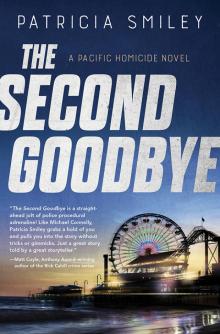 The Second Goodbye
The Second Goodbye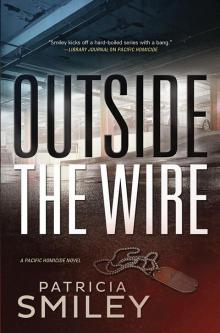 Outside the Wire
Outside the Wire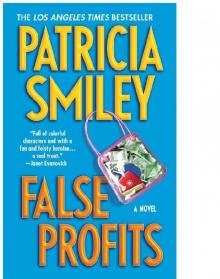 False Profits
False Profits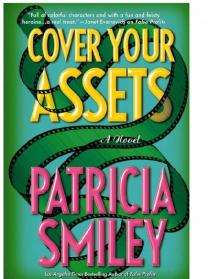 Cover Your Assets
Cover Your Assets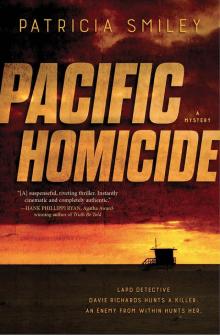 Pacific Homicide
Pacific Homicide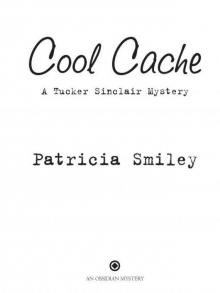 Cool Cache
Cool Cache